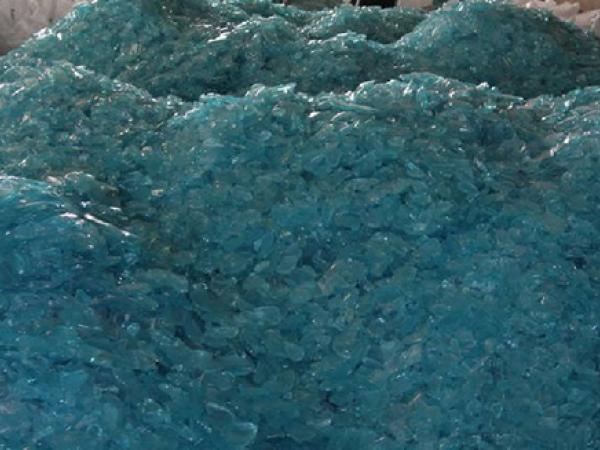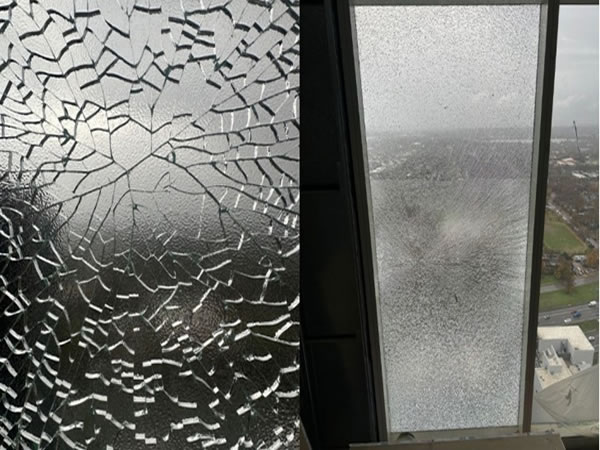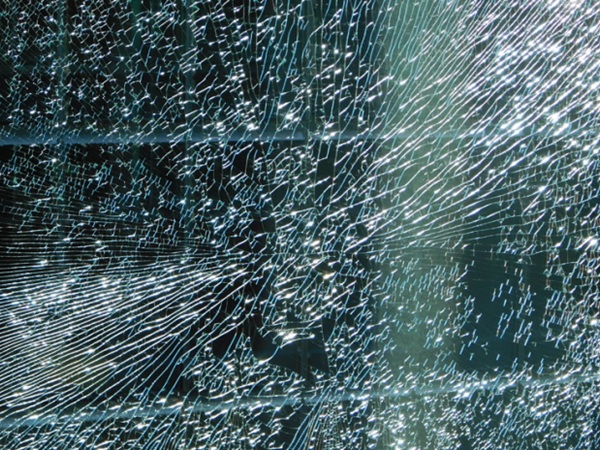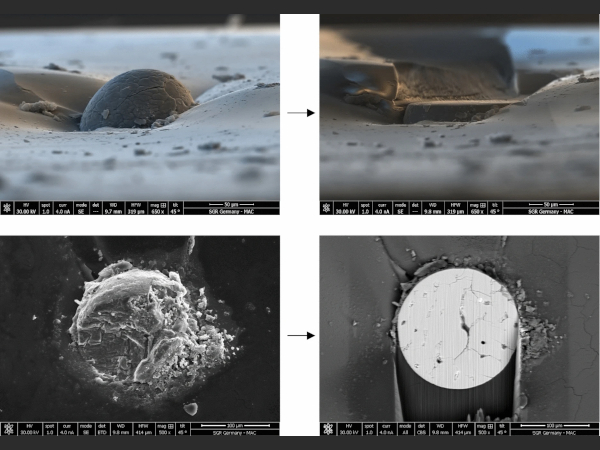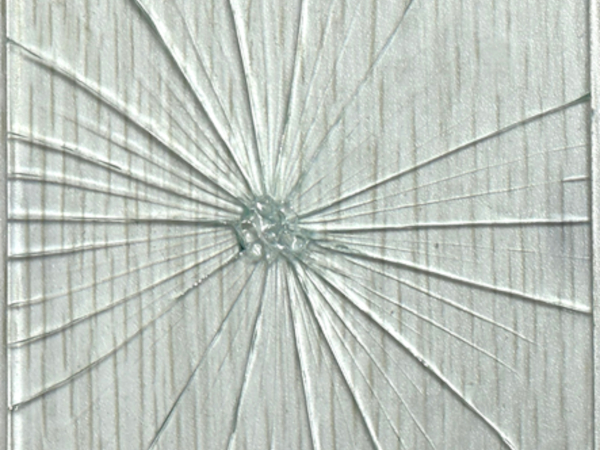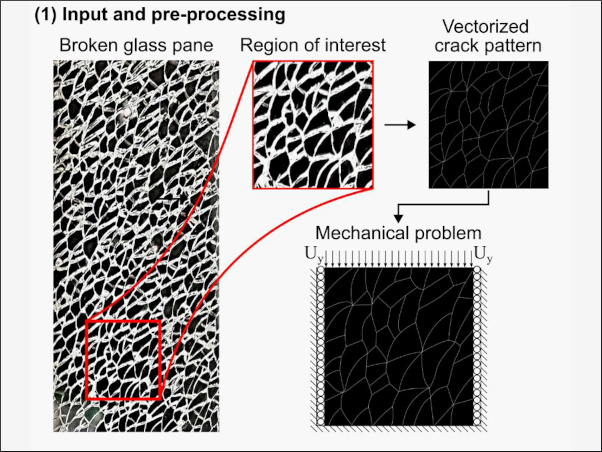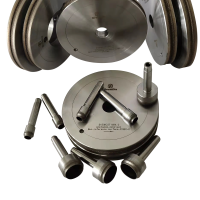The extension of the furnace life through dedicated chemistries and long casting sequences is pushing the working environment to more extreme service conditions. Glass flow control remains a strong demand for quality solution, and should be considered with attention in the global scope of the refractory selection. Tweels as flat arches and joints have to be determined in the light of the glassmaker experience and glass requirement. It is now well accepted to look with close attention on the glass handling in the annealing zone, but most of the time little is done to understand the furnace to working zone containment.

We present here, some of the considerations for the engineering of the flow control.
The observation of the physical barrier installed between the melting zone and the tin bath, is a unique mechanism within the furnace, designed to ensure both the atmosphere containment and the glass flow regulation. A more precise description of the environment is necessary to understand the specific requirement of the tin bath entry, and be able to make recommendation for each glassmaking operation.
High glass flow pressure: destabilize the tweel position when the channel design relies strictly on the mechanical fixation of the tweel.
High temperature: typically coming from the requirement of higher viscosity glass. Aggressive vapors: with a high pressure tin bath control, and high temperature gradientwithin the tin bath furnace. Typically involved when looking for thin or special glasses. Leaks around the flow control parts, as encountered for older floats or poor designs generally observed when non adequate refractories have been used.
The float environment induces a strict application of the service conditions for refractoriesthat are maintaining the atmosphere over the tin metal. In addition of atmosphere control we have also the consideration for glass flow control that takes place.
A common understanding is conducting the selection of the refractory environment as a consideration of thermal stability in the tin bath, letting the atmosphere containment to the different curtains and screens function. However, it should be considered the extreme condition of the flow control under the gaseous pressure typically observed in the end zone of the bath.
.jpg)
Global reducing pressure generated for the control of metallic quality, is creating an extreme thermal and chemical situation for the glass flow control tools (tweels, flat arches & joints. The mechanical pressure from the glass flow is conter reacting with the gas over pressure exerted in the tin bath side. The equilibrium between the two opposite pressures in generally in favor of the mechanical force that lead the vertical flow control of the tweel to be following the minimum stress pattern of the glass. Under severe working conditions (temperature, glass output, thin glass), the tweel could be submitted to high stresses, conducting to multiple situations.
1- Atmosphere leaks
2- Thermal losses
3- Glass leaks
4- Physical distortion
5- Breakages
6- Chemical & mechanical erosion
7- Condensations
The observation of the tweel should be conducted to understand the different solicitations zones present in the refractory barrage and analyze the glass tank operation for highest glass quality output. The junction between the tweel and the refractory superstructure plays a key role in the containment performance. Each glass plant should be recognized for the ability to maintain consistent operating conditions over the length of the float process, whatever glass characteristics are required.
Adaptation of the moving tweel and near refractories should lead to the selection of the working conditions. Changes in the product service or unusual working behavior should be traced back to the quality of the seal and the conditioning of the ceramic parts. Little mistake is acceptable for the flow control environment, which remains a key tool of glass quality on the long run of the glass production, and that will require full attention at all steps of the application;
.jpg)
A: mechanical fixation (low temperature)
B: structural zone (400-200°c)
C: condensation zone (600-400°c)
D: condensation zone (800-600°c)
E: condensation zone (1100-800°c)
Chemical reactions
On a stable working condition the vapor species are conditioning the surface reactions between the ceramics and gaseous phases. Most evident reactions are involving not only alkalis but also destabilization agents. The chemical reactions are pushing for metastable phases in the surface of condensation, linked to the concentration and temperature of the reaction. The observation of trydimite and crystobalite being indicative of glass condensation as well as secondary species from the bath or atmosphere. Reducing or oxidizing conditions in the ceramic near environment determine the level of reactivity and could impact on a stronger discrimination of glass float working parameters; However, we should always consider the condensation as a part of the glass atmosphere containment and reduce the reactivity of the fused silica by controlling the temperature at the same time than controlling the glass operation.
Dynamic corrosion
.jpg)
Click to enlarge
Atmosphere around the tweel is controlled by the metallic bath in the glass environment, but is also submitted to oxide to sulfur & metal ratio changes in function of the real working conditions implied by the operation. We can develop either unbalanced chemistry when glass output or chemistry changes are required in the manufacturing. Most of the observations are leading to the creation of unstable chemical species under the thermal gradient generated at the barrage; In most scenarios we will observe some condensations around the flat arches, that are influencing the global perception of the tweel efficiency. A global understanding of the environment capabilities should be collected in order to adjust the operation, maintain clean working conditions. As we can analyze from the diagram, the phase stability is directly linked to the temperature when considering a closed reactions, but such environment will be submitted to more rapid degradation as soon as atmosphere conditions are changing. All equilibrium will then be controlled by dual thermal and atmospheric species, giving a complex and evolving condition that will directly influence the glass control and quality.
Quality tweels are based on high-grade fused silica to avoid both chemical and thermal stresses in the glass environment; Some of the structural and chemical characteristics of the parts cannot be described in our document, but stays critical to the operation. A structural approach of the tweel could be conducted for the selection of the design. Inherent chemical structure is described as a function of the thermal requirement, but we should keep in mind that chemical observations need also to be conducted for the correct selection of materials and operating parameters.
Crystalline transition
.jpg)
Click to enlarge
Conclusion:
Tweels and atmosphere containment are critical to the glass float operation by providing high quality glass flow control, atmosphere control, chemical and thermal stability between the hot zone and the tin bath. Most extreme service conditions could be observed in recent operations when extension of the refractory life is going with more difficult glass chemistries and thin glass requirement; Interdependence between the flow control design and glass operation requires a good understanding of the glass chemistry and high cooperation between glass and refractory partners. High quality glass should push even further the need for high ceramic requirement, and enhance the development for higher quality standards.
Author: Gilbert Rancoule, Vesuvius R&D

